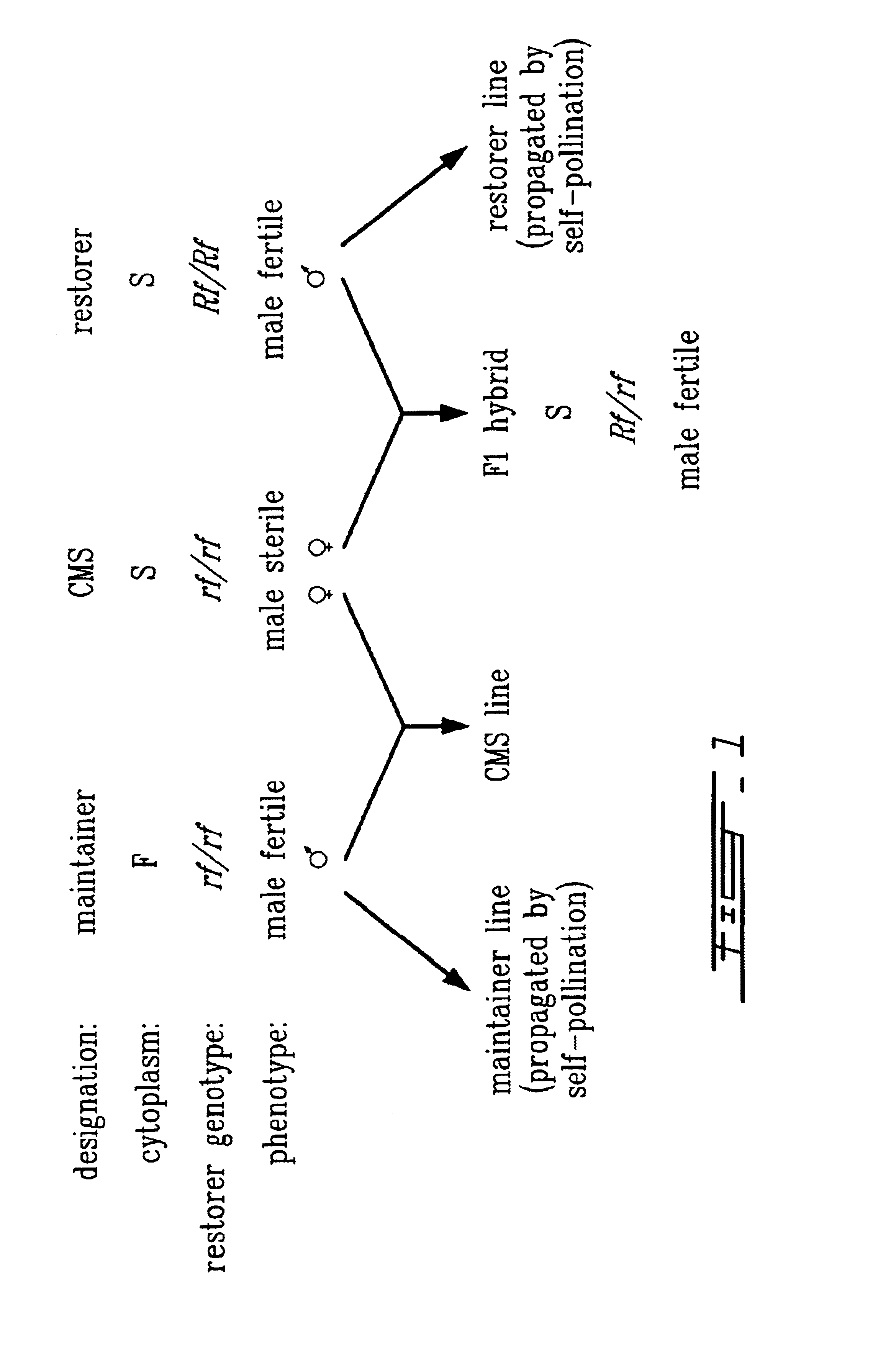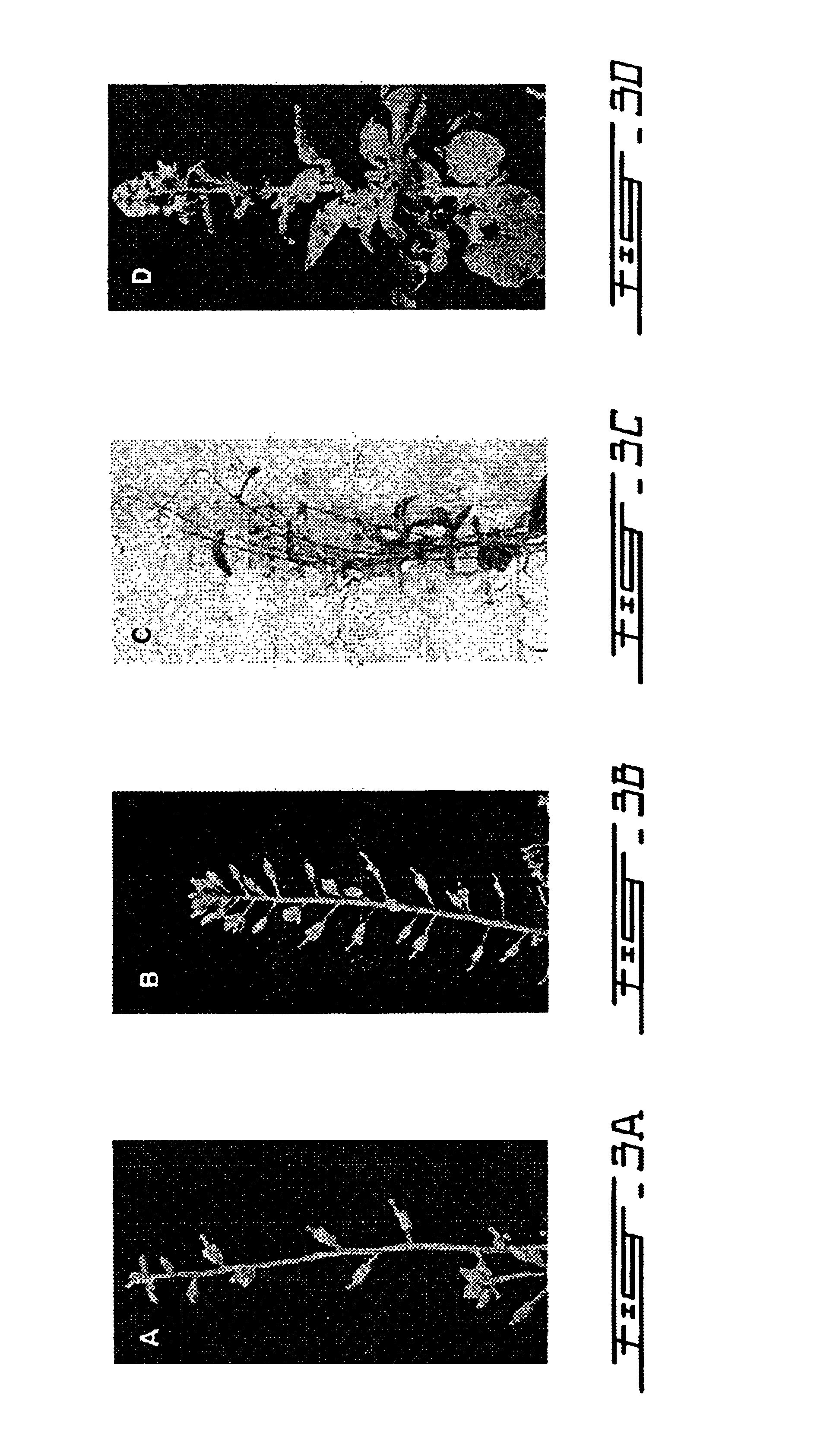Method for enhancement of naturally occurring cytoplasmic male sterility and for restoration of male sterility and for restoration of male fertility and uses thereof in hybrid crop production
a technology of cytoplasm and cytoplasm, which is applied in the field of enhancement of naturally occurring cytoplasmic male sterility and for restoring male fertility and using thereof in hybrid crop production, can solve the problems of inability to manually emasculate large numbers of plants, high cost of chemicals, and partially effective, and achieve enhanced maintenance of male sterility, time and money saving, and enhanced male sterility
- Summary
- Abstract
- Description
- Claims
- Application Information
AI Technical Summary
Benefits of technology
Problems solved by technology
Method used
Image
Examples
example i
Use of the AP3 / A9-A6e Construct as a Dominant Fertility Restorer Gene in B. napus
[0066]In this example, outlined in FIG. 4, the A9 / A6e construct is introduced by genetic transformation into the genome of a variety such as Westar which is normally sterilized by (pol) cytoplasm. The gene would be introduced into pol cytoplasm line, and the resulting transgenic plants recovered would be expected to be partially male fertile. This line is then self-fertilized to generate a partially male fertile restorer line that is homozygous for the A9 / A6e transgene. This line could then be crossed with different pol CMS lines to generate fertility restored F1 hybrids.
example ii
Use of the AP3 / C4-ORF Construct to Enhance Pol Cytoplasmic Male Sterility in B. napus.
[0067]The sterility induced by pol cytoplasm on most B. napus genotypes is incomplete, especially at higher temperatures. This residual pollen production results in a variable degree of self-fertilization in the CMS line in a hybrid seed production operation. Plants raised from these seeds will not be hybrid and will have a reduced capacity themselves to set seed, These factors together can reduce, to a considerable extent, the yield of the “hybrid” seed batch. In this example, outlined in FIG. 5, the dominant sterility conferring properties of C4-ORF are employed to reduce or eliminate residual pollen production in the CMS line, and thereby enhance the percentage of hybrid seed recovered, and the hence yield of the hybrid seed batch. The. C4-ORF construct is introduced by genetic transformation into a fully male fertile Westar (nap) line to produce a partially male fertile line that contains the ...
PUM
| Property | Measurement | Unit |
|---|---|---|
| size | aaaaa | aaaaa |
| petal size | aaaaa | aaaaa |
| width | aaaaa | aaaaa |
Abstract
Description
Claims
Application Information
 Login to View More
Login to View More - R&D
- Intellectual Property
- Life Sciences
- Materials
- Tech Scout
- Unparalleled Data Quality
- Higher Quality Content
- 60% Fewer Hallucinations
Browse by: Latest US Patents, China's latest patents, Technical Efficacy Thesaurus, Application Domain, Technology Topic, Popular Technical Reports.
© 2025 PatSnap. All rights reserved.Legal|Privacy policy|Modern Slavery Act Transparency Statement|Sitemap|About US| Contact US: help@patsnap.com



